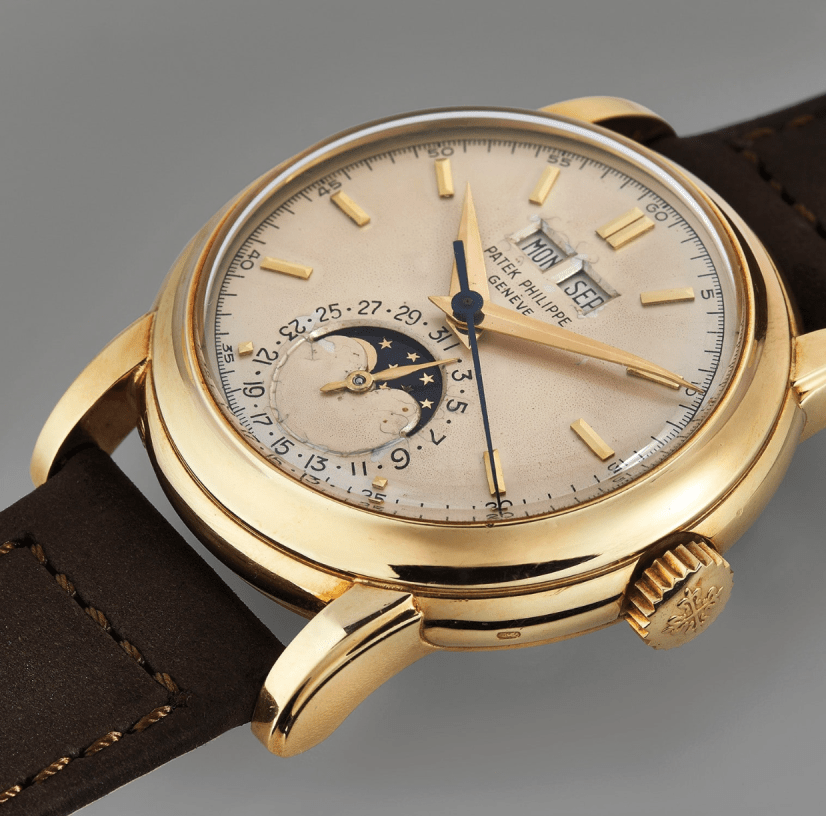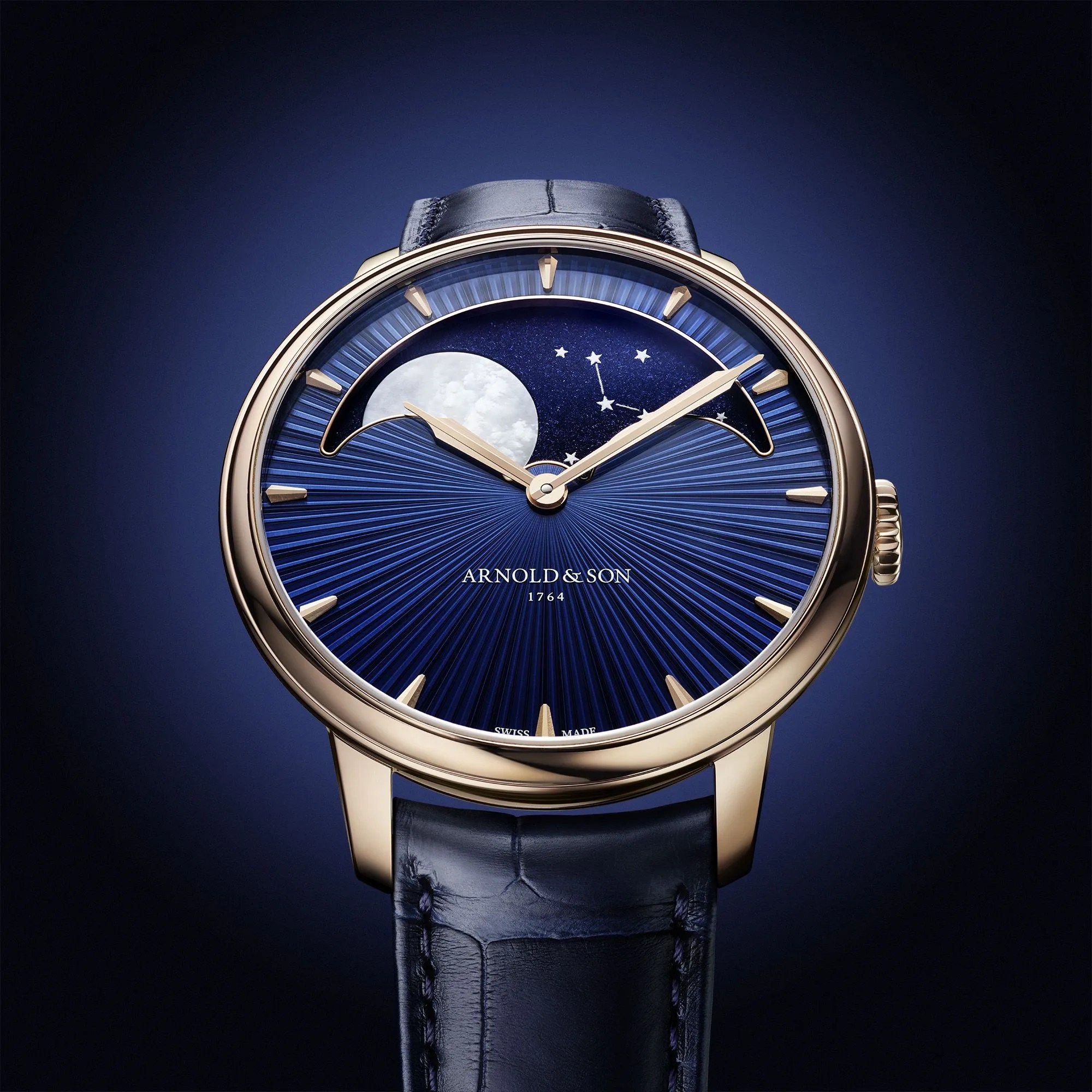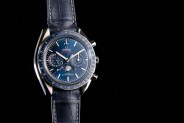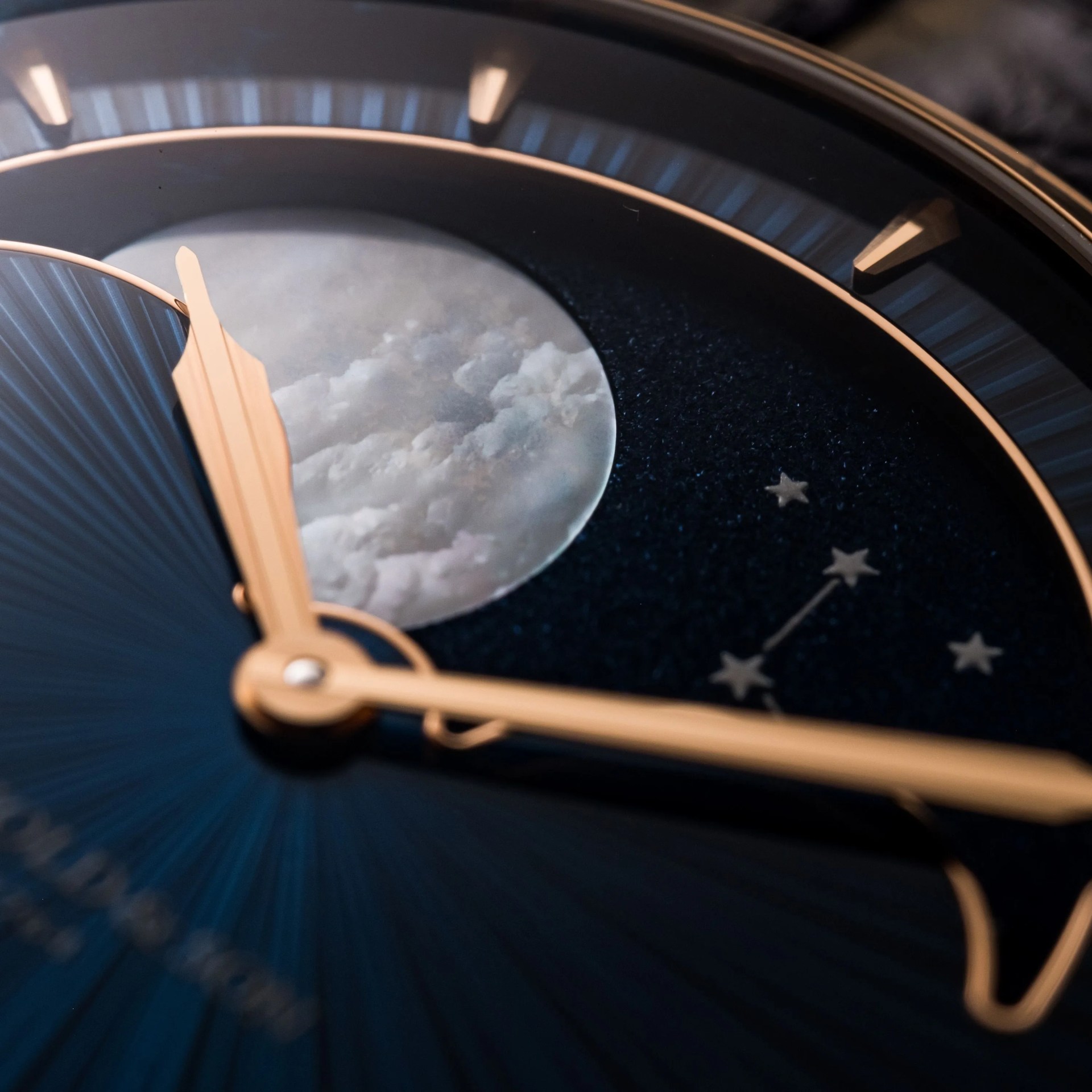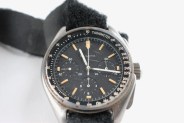Timekeeping was born out of man’s desire to make sense of the movement of the sun, the moon and the constellations. When the early horologists graduated from the sundial to gears and hands, one of the important events they tracked was the lunar cycle. This is because although the sun’s arc dictates days and seasons, observing the moon was the first method of telling the passing of months.
From new moon to full moon and back again is 29 and a half days, providing a regular pattern that has been the life cycle for any number of things over the centuries, from pagan celebrations to paychecks. Its form and movement can also be represented in miniature, right on your wrist.
What, exactly, is a moon phase watch?
A moon phase watch shows the current phase of the moon as you see it above. As our orbiting pet rock passes across the sky, so too does its miniature version in the watch travel around, displayed in an aperture on the dial. This type of watch is perhaps the most elemental in its graphical representation of the passage of time, as opposed to the more precise and sterile hands and numbers that other complications use. It is a more whimsical and artistic complication, one that is fun to own, linking us with our sky-watching ancestors and a lineage of watchmakers and artisans all at once.
What are moon phases?
A “moon phase” is the lighted area of the moon that is visible as it travels around the earth. The movement of the Earth and the moon’s position relative to us means that we are constantly seeing a different view. While astronomers have several names for the appearance of the moon throughout its cycle — “waxing gibbous” to “waning crescent” and others in between — there are really only four phases you need to know:
